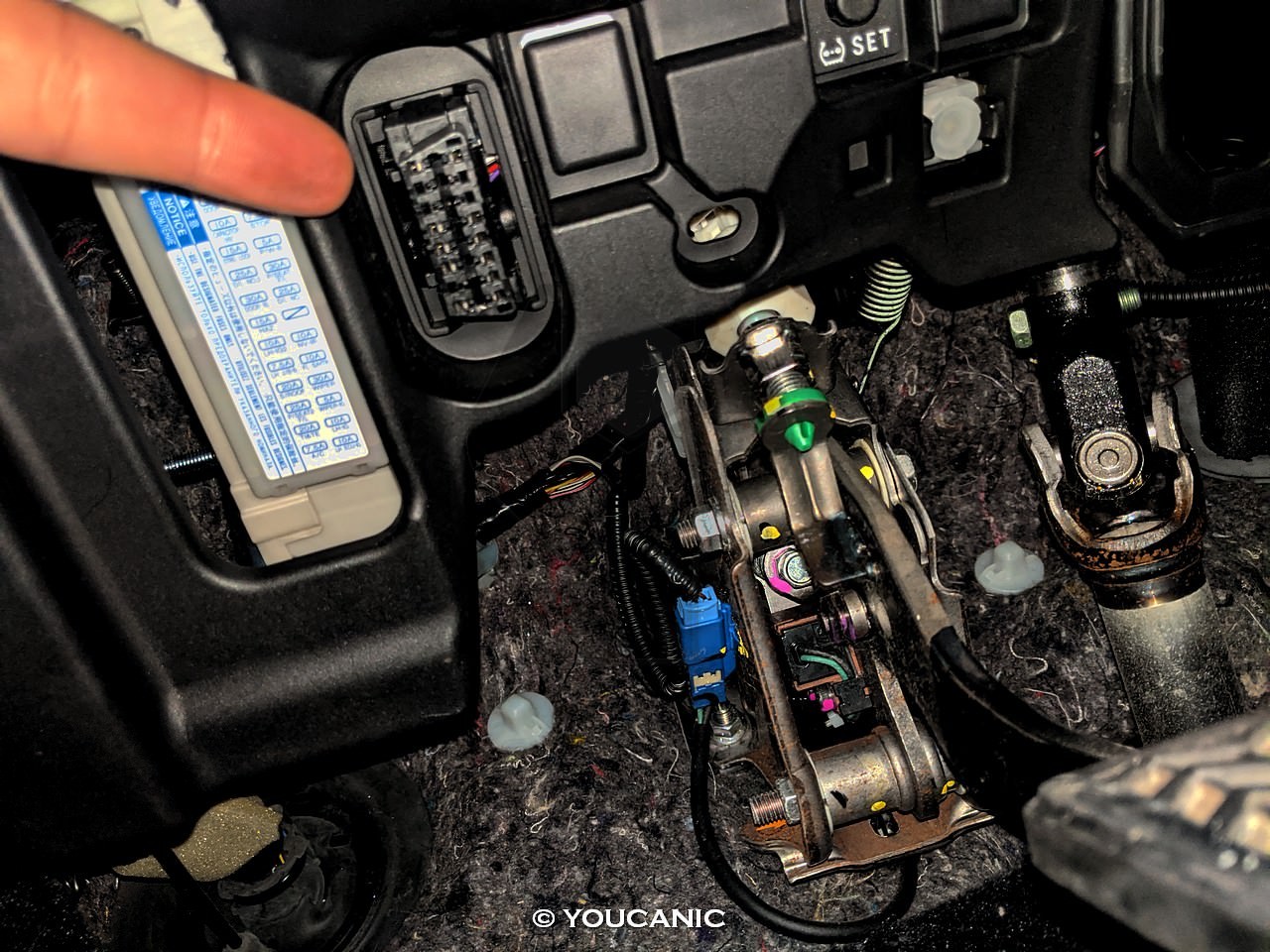For owners of the 2017 Subaru WRX, understanding your vehicle’s diagnostic system is key to maintaining its performance and addressing any potential issues. A crucial component of this system is the On-Board Diagnostics II (OBD2) port. This port serves as the gateway to your car’s computer, allowing mechanics and DIY enthusiasts alike to read diagnostic trouble codes, access live data, and ensure your WRX is running smoothly. Locating this port is the first step in utilizing these powerful diagnostic capabilities.
Typically, in a 2017 Subaru WRX, the OBD2 port is designed to be easily accessible. You can usually find it nestled beneath the dashboard on the driver’s side of the vehicle.
 OBD2 Port Location Under Dashboard of a Subaru WRX
OBD2 Port Location Under Dashboard of a Subaru WRX
To pinpoint the exact location, slide into the driver’s seat and look under the dashboard, specifically above the brake pedal area. You’re searching for a 16-pin connector. It’s often positioned near the steering column or where the driver’s side door panel aligns with the dashboard when the door is closed. While the location is generally consistent across Subaru models, including the WRX, always consulting your 2017 Subaru WRX owner’s manual is the definitive way to confirm the precise OBD2 port location for your specific vehicle.
Why is the OBD2 Port Important for Your WRX?
The OBD2 port is not just a connector; it’s a vital interface for vehicle diagnostics. Whether you’re experiencing a check engine light, performance issues, or simply want to monitor your WRX’s health, the OBD2 port is essential. By connecting an OBD2 scanner to this port, you can:
- Read Diagnostic Trouble Codes (DTCs): Understand why your check engine light is on and identify potential problems.
- Clear Codes: Reset the check engine light after addressing the issue.
- Access Live Data: Monitor real-time data from your engine and other systems, such as engine temperature, RPM, and sensor readings.
- Perform Emissions Testing: Check your vehicle’s emissions readiness for compliance.
- Utilize Advanced Diagnostics: With professional-grade scanners, you can perform more complex tasks like bi-directional controls and system tests.
Common Issues with Subaru WRX OBD2 Ports
While generally reliable, the OBD2 port in your 2017 Subaru WRX can sometimes encounter issues. Here are some common culprits:
- Loose or Corroded Connections: Over time, the connections within the OBD2 port can become loose or corroded due to environmental factors. This can hinder the scanner’s ability to communicate with your WRX’s computer.
- Faulty OBD2 Port: In rare cases, the OBD2 port itself may be faulty due to manufacturing defects or damage. If other troubleshooting steps fail, port replacement might be necessary.
- Blown Fuse: The OBD2 port is typically protected by a fuse in your WRX’s electrical system. A blown fuse can cut power to the port, preventing it from working. Check your owner’s manual for the OBD2 port fuse location and inspect it.
- Onboard Computer Malfunction: Although less common, issues with your Subaru’s onboard computer (ECU or PCM) can affect OBD2 port functionality. This is usually a more serious issue requiring professional diagnosis.
- Battery and Power Issues: A weak or underperforming car battery can sometimes lead to issues with the OBD2 port, as it requires stable power to function correctly. Ensure your battery is in good condition.
If you suspect an issue with your 2017 WRX OBD2 port, it’s always recommended to consult a qualified mechanic for a thorough inspection.
Choosing the Right Scan Tool for Your Subaru WRX
Subaru dealerships utilize specialized tools like the Subaru Select Monitor (SSM) for in-depth diagnostics. However, for WRX owners and DIY enthusiasts, there are excellent aftermarket OBD2 scanner options available that are compatible with Subaru vehicles.
Tools like the YOUCANIC UCAN-II Full System Scanner offer comprehensive diagnostic capabilities for Subaru WRXs and other vehicles. These scanners can often perform many of the same functions as the factory SSM tool, including reading and clearing codes from various vehicle systems, performing bi-directional controls, and executing maintenance reset functions. They provide a cost-effective and user-friendly solution for diagnosing and maintaining your 2017 Subaru WRX.
Conclusion
Locating the OBD2 port in your 2017 Subaru WRX is a simple yet crucial step for vehicle maintenance and diagnostics. By understanding its location and function, you can empower yourself to monitor your WRX’s health, troubleshoot issues, and ensure it continues to deliver peak performance. Remember to always consult your owner’s manual for the most accurate information specific to your vehicle and consider utilizing a quality OBD2 scanner for comprehensive diagnostics.